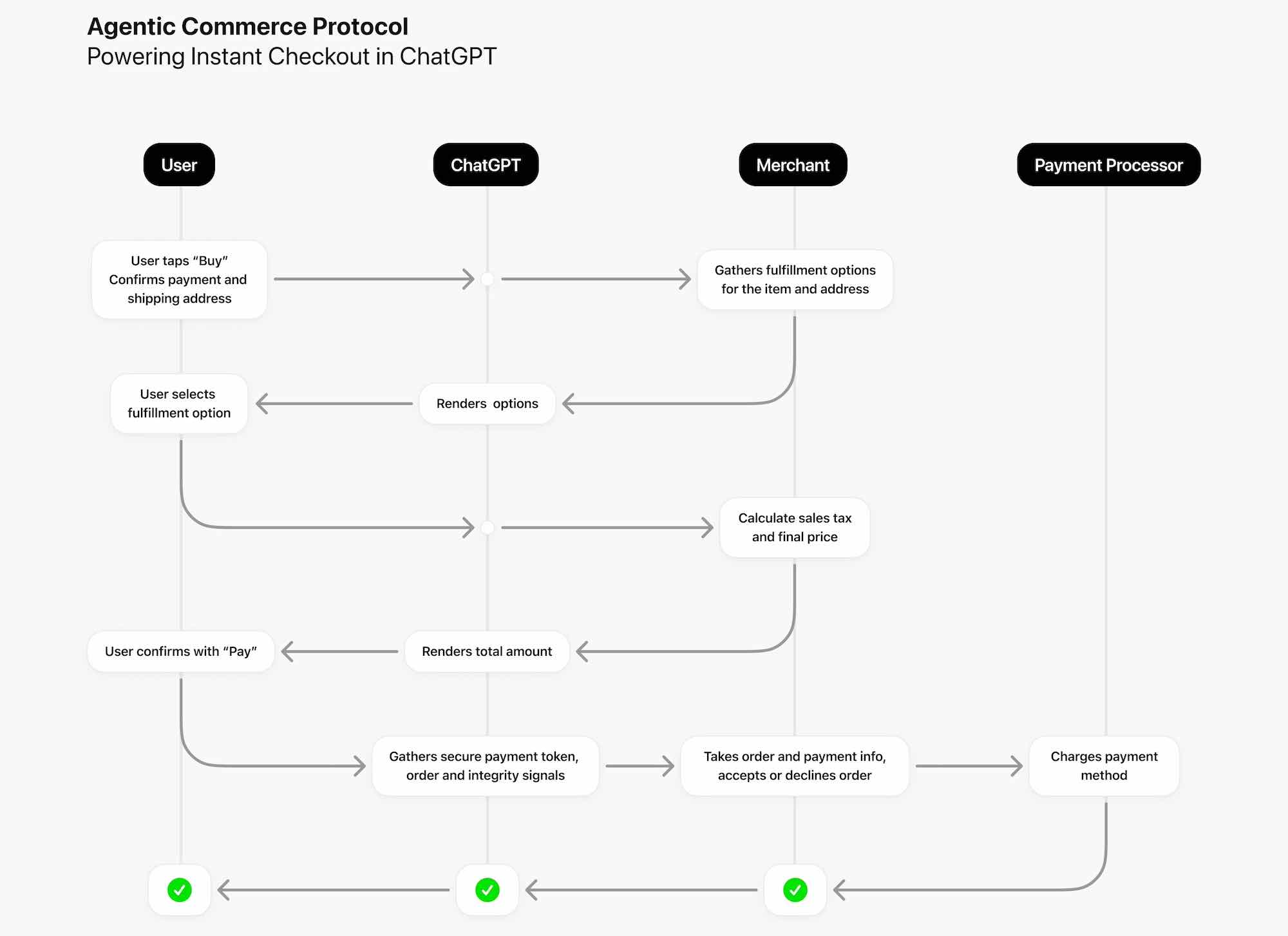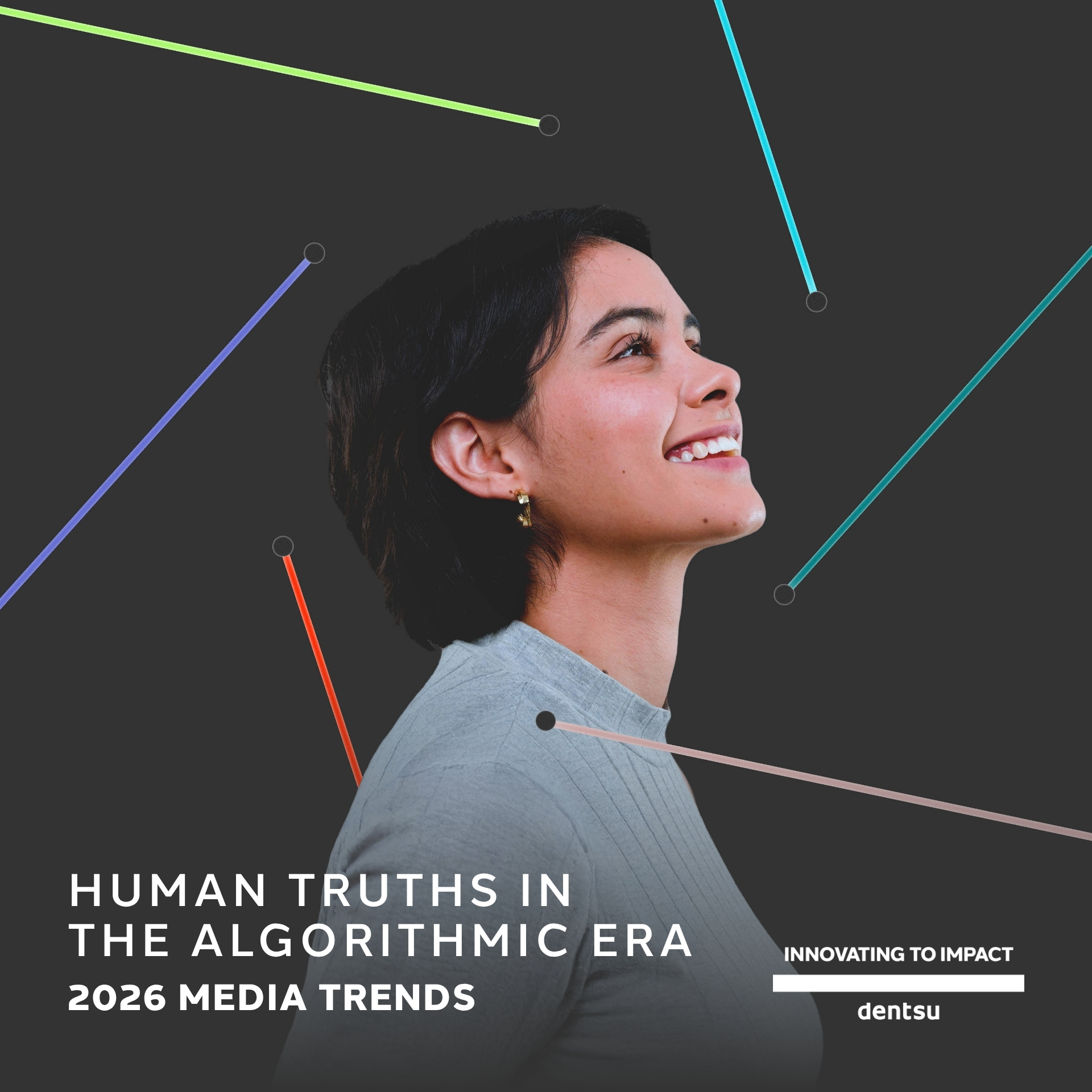The days of constantly scrolling through search results, comparing costs, and trying to find the right product at the right price are long gone. AI shopping is here. With ChatGPT’s instant checkout, the route from intent to buy has been reduced into a single conversation. For brands, this will not be just a new sales channel, but a big shift in how consumers search, evaluate, and buy. Marketing and product teams will need new technical skills and AI literacy. The MarTech opportunities are endless - from building AI-powered brand agents to rethinking attribution. Online shopping is no longer about searching. It’ is about conversing, and the conversation has already begun.
Conversational commerce: The 'what' and 'how'?
ChatGPT’s Instant Checkout was released on 29th September 2025. It’ is powered by Agentic Commerce Protocol (ACP), an open standard created by OpenAI and Stripe. It’ is currently available for Etsy shops in the US and coming to Shopify soon.
Brands can now integrate ACP into their existing infrastructure to enable “agentic” checkout - where marketing, e-commerce and engineering converge. Here is how:
- Discovery: Brands can update their existing product feeds via Product Feed Spec. These secure, regularly refreshed feeds (TSV, CSV, XML, or JSON) are shared with ChatGPT. OpenAI uses the feed to find, organise, and rank products so ChatGPT can show the most relevant options during conversations. For marketing teams, this means that structured, enriched product data will directly affect discoverability and conversions. It’s like SEO, but for conversational commerce.
- Checkout: When users search for products, ChatGPT collects fulfilment and payment information. If the user decides to buy, ChatGPT calls the brand’s ACP endpoints (detailed in the Agentic Checkout Spec) to create a checkout session and securely share the data. The brand then verifies the order, checks shipping options, calculates taxes, runs payment and fraud checks, and processes the payment through their existing system before approving or rejecting the order. ChatGPT then communicates the result back to the user.
- Payment: OpenAI uses the Delegated Payment Spec to create a one-time payment session with the brand’s chosen payment service provider (currently Stripe, with more to come). The PSP responds with a payment token, which ChatGPT passes back to the brand to complete the transaction.
Here's the complete flow:

Credit: OpenAI
Brands still have full control over fulfilment and payments, preserving customer trust, even in this AI-driven sales channel. With a sophisticated technical integration, our teams can enable AI Shopping on top of existing systems, giving brands a head start in this emerging market.
What's next for 'ChatGPT (AI) shopping' ?
This integration opens up new ways to engage customers, track performance, and drive conversions - introducing both new opportunities and challenges. Smaller brands will likely gain a local advantage, as long as their feeds are optimised for AI and are regularly updated. Relevance might trump raw ad spend. Larger players may start negotiating direct partnerships with OpenAI for premium placement to maintain a strong presence in AI shopping.
For marketing teams, measurement will be even more challenging than it was with the shift from cookies to first-party data. Brands will have limited visibility over consumer trends and habits compared to current full-funnel attribution methods. Integrating ChatGPT data into CRM systems will likely become essential for tracking trends, understanding customers, and optimising marketing strategies.
With OpenAI hinting at potential future paid ad placements, new marketing channels like sponsorships or AI-native ad placements might start appearing. Marketing teams will need to embrace AI shopping and focus on smarter, customer-first strategies to stay ahead.
.png)
Engineering the right products
This is where engineering steps in. If marketing wants results, tech must deliver. With the advent of new ways to buy, come new ways to innovate. Here are a few examples of technology being built, or that could be built by dentsu to rise as a leading tech agency:
- Instant checkout middleware: A middleware solution that acts as an ACP backend for brands, easily connecting to any product feed and Shopify or Etsy shop. It handles API integrations, payment flows, and order verification behind the scenes, simplifying adoption for non-technical teams. This allows marketing and product teams to focus on strategy, promotions, and customer experience, rather than technical setup.
- Feed optimisation: A tool that ingests a brand’s catalogue, automatically rewrites, enriches, and tests product data for LLM compatibility. It can ensure products are more discoverable and relevant by optimising titles, descriptions, images, and metadata. Essentially, SEO for conversational commerce. Marketing teams can use it to experiment with different copy, tags, and formats to see what drives engagement and conversions without touching the backend manually.
- Custom GPTs: A custom GPT gives brands a voice within ChatGPT, allowing customers to interact directly rather than receiving generic recommendations. For example, customers can “Talk to the Nike GPT” or “Ask Sephora AI for skincare advice.” This would also provide more insights into what users are searching for, their preferences, and pain points, helping marketing and product teams refine strategy, content, and offerings.
- Measurement & insights: A platform that watches brands’ product feeds and runs automated ChatGPT queries to track ranking, visibility, and relevance. Using NLP analysis, it detects ranking shifts, for example, “Your product just got bumped down.” This gives marketing teams timely insights to adjust strategy. It provides marketing teams with a massive advantage, helping them stay ahead in the fast-moving AI shopping landscape.
These solutions are just the start. They hint at what the next generation of marketing technology looks like. If today is about product feeds and agents, tomorrow is about scale and monetisation.
With the advent of AI shopping, and changes in the way people search, we are not too far from seeing paid Ad Placements within ChatGPT. This is a new marketing technology channel - Conversational Commerce Optimisation (CCO) - and a new era of marketing.
Measurement is no longer just clicks or impressions; it’s how ChatGPT talks about a brand. And if we can bridge engineering and marketing, we can create a solid foundation for our brands to win in the algorithmic era.
If you'd like to learn more, don't hesitate to get in touch.

